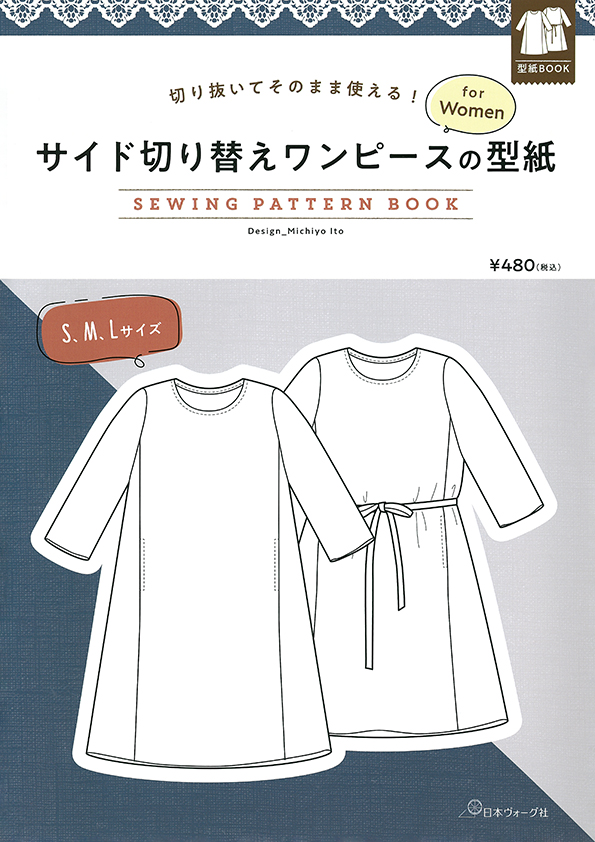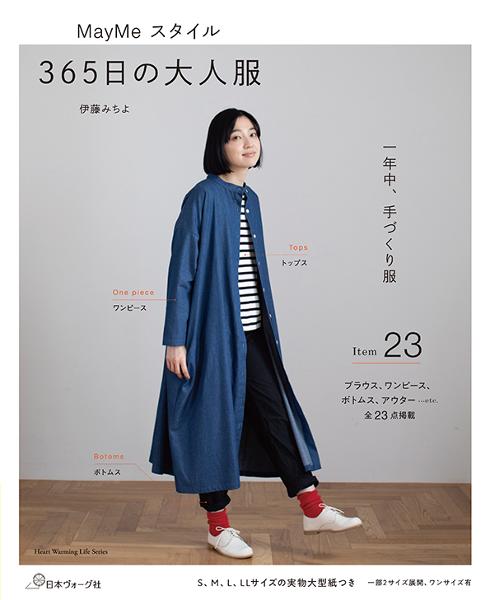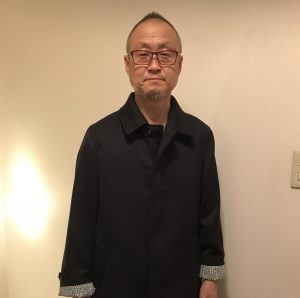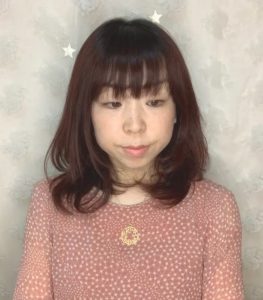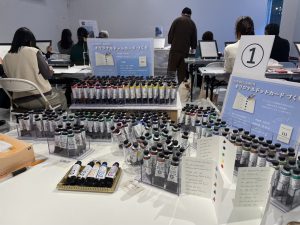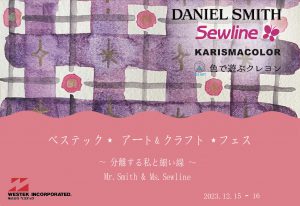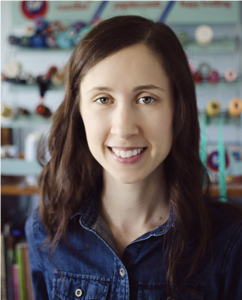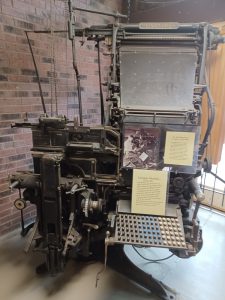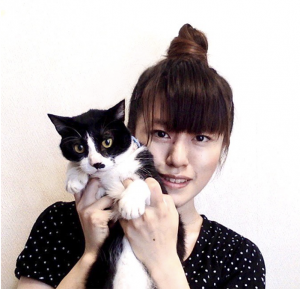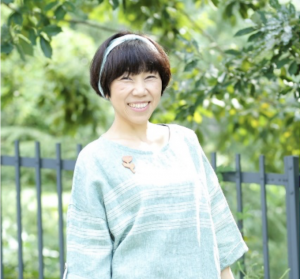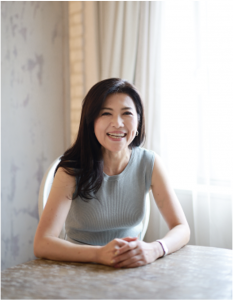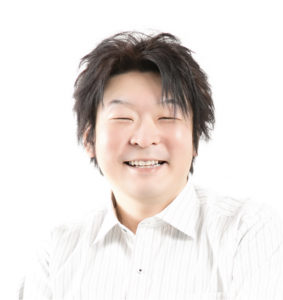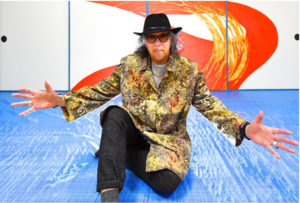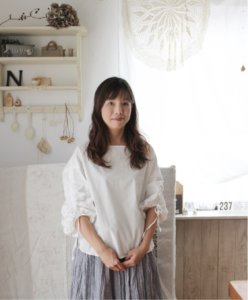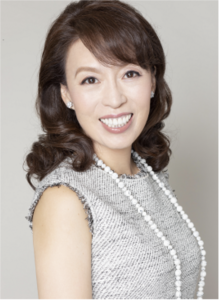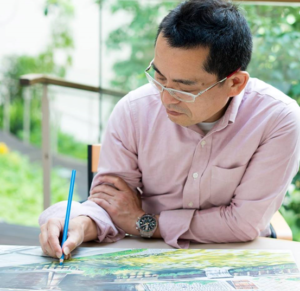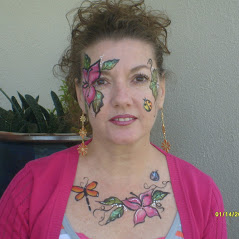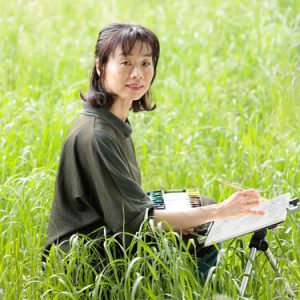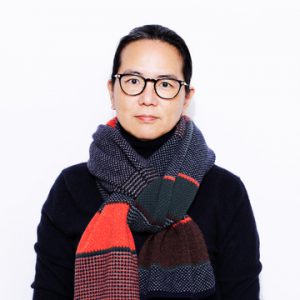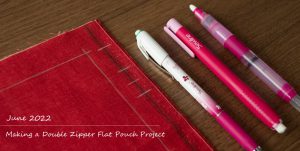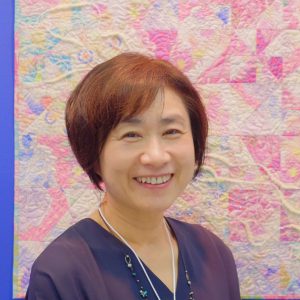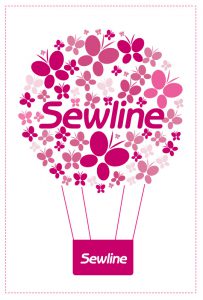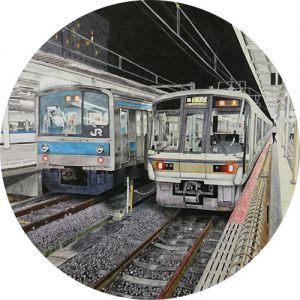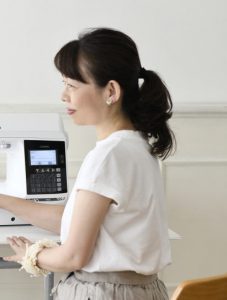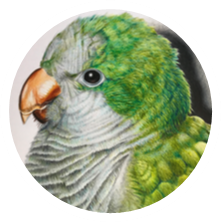#8 ゲスト:伊藤 みちよ
The Guest of January 2021: Ms. Michiyo Ito
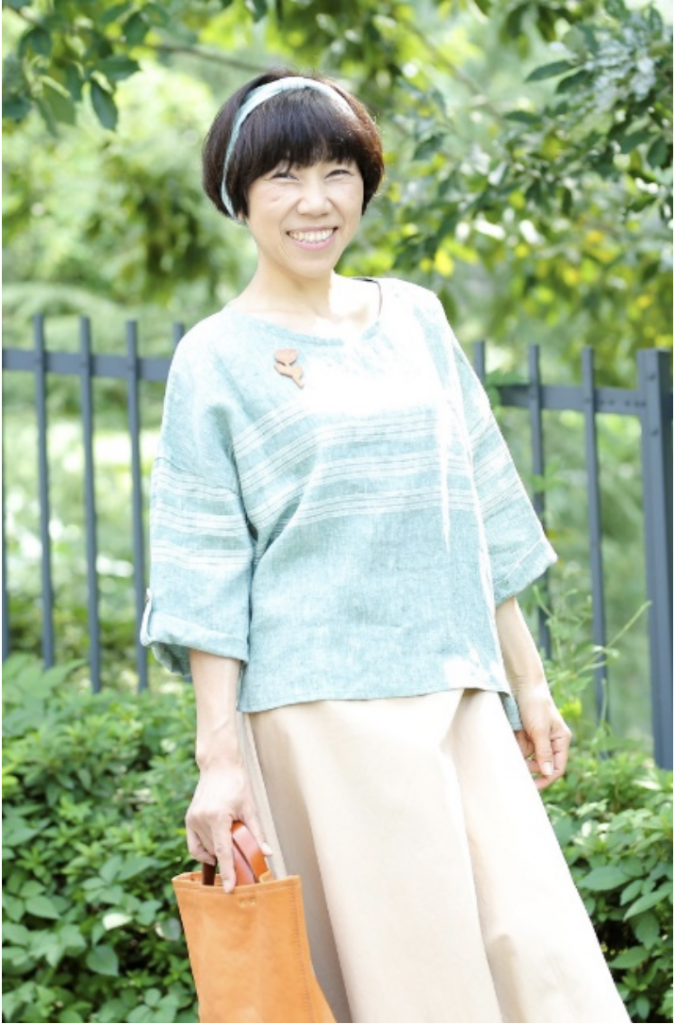
今月のゲスト:伊藤 みちよ
ジャンル:洋裁 Dress Making Clothing Designer
プロフィール:
幼少の頃から針を持ち、お人形の洋服を作り始める。
小学校に入った時には足の届かないミシンを立ちながら踏む。
ヴォーグ学園講師(東京校・横浜校・名古屋校)
NHKすてきにハンドメイド出演(2018/5、2016/5、2015/4、2014/5、2013/7、アンコール放送2014/12)
2015/1 公開 映画『繕い裁つ人』洋裁指導
The Guest of January 2021: Ms. Michiyo Ito
Genre: Dress Making Clothing Designer
Profile: Since Ms. Ito was child, she started to use the sewing needle to make the clothes for her doll.
When she entered into the elementary school, she used the old style foot-operated sewing machine while standing. (Her foot did not reach the sewing machine pedal!)
Her Favorite Things: Sewing / Diving / Cooking / Sea / Dolphin / Mermaid / Shell / Blue / Green / Coffee / Beans
Ms. Michiyo Ito is a Teacher/Lecturer at Vogue Gakuen (handmade) school (Tokyo, Yokohama, Nagoya)
Appearance on the TV show “Suteki ni Handmade” (2018/5、2016/5、2015/4、2014/5、2013/7、2014/12 re-air)
Dress making instruction for the movie “Nui Tatsu Hito” (A Stitch of Life) in Jan. 2015
http://tsukuroi.gaga.ne.jp/
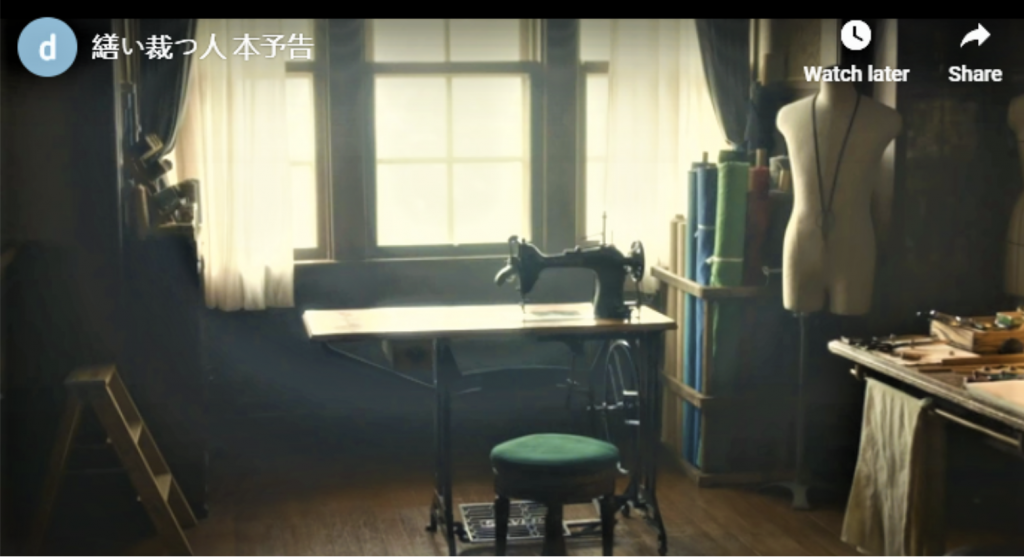
マガジン
『増補改訂版MayMeスタイル 縫いながら覚えられるホームソーイングの基礎BOOK』
今回の新刊は、2015年に出版した同著の増補改訂版です!
ソーイングの内容をより充実させ、痒いところに手の届く親切さが嬉しい一冊になっております。
また、前回から新作6点が追加。作ってすぐに着られると大好評のお洋服が勢ぞろい!実物大型紙が3色刷りになり、より見やすくなりました。
初心者の方から上級者の方まで、ずっと役立つ決定版です。
発売日2022/03/24
https://nihonvogue.com/book/detail.html?id=2247
切り抜いてそのまま使える!型紙BOOKシリーズ。
May Me伊藤みちよさんが提案するワンピースは、縦のラインを強調した切り替えのすっきりしたシルエットが魅力。生地の使い方を変えた2通りの提案をしています。
作り方はイラストで丁寧に説明。実物大型紙2枚つき、S/M/Lサイズを掲載。
発売日:2021/10/30
https://www.tezukuritown.com/nv/g/g119664/
「このお気に入りの半袖のシャツ、七分丈もあったら秋も着れていいのにな」
「秋は薄手の生地で、冬は厚手の生地で、同じ型の服を着れたらいいな」
「この型はニット生地だとハードルが高いな、、コットン生地だったらチャレンジ出来るのにな」
そんなお声を反映して、自分でカスタマイズ出来て楽しめて、一年中好きな服を作って着るための本という意味で、「365日の大人服」というタイトルにしました。
ぜひ、自分の好きな服を作って、着て、一年中心地よく過ごしてください。
発売日:2021/9/15
https://nihonvogue.com/book/detail.html?id=2141
インタビュー音声
The singer of the theme song : Ms. Carmella Constancio (YouTube)
Interviewer : 柴田 かおる (Kaoru K. Shibata)
Q.伊藤先生が洋裁に興味を持ったきっかけは何ですか。
幼稚園くらいの時に作ったリカちゃん人形のお洋服ですかねー。ハンカチを切って、リカちゃんに直接着せるように穴を開けたりとか…、あとは売っていないお洋服を作ってあげたくて、それを自分の服と見合わせて見様見真似で作ってました。
―それはお母さまやおばあさまに教わってやっていたわけではなくご自分でやられていたんですか?
たぶん自分が好きでやっていたんですけど…、母方の祖父がすごく器用で、もう幼稚園の頃から私に針を持たせてくれていたので、その祖父の元でやっていましたね。
―なるほど。じゃあそれからその後もずっと(洋裁への)興味が続いていて、お勉強されていた?
そうですね。手芸全般がとにかく好きだったので、母が通信教育でやっていた編み物の用具を出してきては、自分でやってしまったりしていて…。その様子を見ていた母が、小学生の時に近くの手芸店でやっていた手芸教室に連れて行ってくれて、それで手芸の基礎となる部分はそこのお姉さんに教えてもらって…っていう感じでしたね。
―基礎をやられた後は、学校に行ってデザインの勉強なども?
いや、もう全然。小学生の頃は手芸部にいたりとか、それくらい。とにかくずっと自分のそばに編み物もありましたし、縫うこともありましたし…、うちのミシンは私が「欲しい」って言って母が買ったと、後々大人になってから聞いた話なんですけど。
そんな感じで常に手作りがあって、ご近所で縫製のお仕事をされているおばさんのお家によく遊びに行ったりとかしていましたね。本当、たまたまそういう方が身近にたくさんいらっしゃったので…。その時々に行って教えてもらってっていう感じでしたね。
Q.先生の著書本を拝見しますと大人可愛いお洋服がとても素敵ですが、そういったデザインの基礎なども先ほどのような時期に作られたのでしょうか。
そうですね。デザインは自分が着たいとか、合わせたいとかを思いながら描いています。市販の物だと自分の体形がこう…手が長くて袖が足りないとか、そういうところからお洋服づくりを始めているので、自分が好きなデザインを着たいとかそういうところからスタートして…。
今はちょっと自分だけじゃもう足りないので、お友達とか一緒に本を作っている編集さんとかをイメージして、こういうの似合いそうだなぁとか。こういうの好きそうだなぁってところから、デザインを広げています。
一番先生のデザインで気に入っているのが“シンプルだけどちょっとしたオシャレ”という部分なんです。
すごい嬉しいです!
シンプルで長く着れるけど、ちょこっとだけ可愛かったりとか、ちょっと流行も加味していたり…みたいなところが自分の目指しているところなので、そこを受けとめていただけるのはすごく嬉しいです。
段々定番のものっていうのが自分の中にもやっぱり出来てくるので、それがもう来年だと売ってないんですよね。市販のものだと。やっぱり自分の好きな形はもうずっと好きだったりするので、それがハンドメイドだとずっと作れるっていうのがすごく良いところだなあって思ってます。
Q.先生がデザインをされる時というのは、どういうことをポイントにされていますか?形や色、布などどこから入るのがポイントになっているんでしょうか。
本の場合と自分の作品の場合とで結構真逆になっていて、本の場合はデザインありきで布を選んでいくんですね。やっぱり本の(内容の)バランスもありますし、いろんな生地をご紹介したいというのもあるので。
自分が販売しているお洋服に関しては、手にしたときに…、まあ「この服を作ろう」と思って仕入れをしているんですけれども、実際に手元に来た時には「この服よりこっちの方が合うな!」とか、実際に触って素材を選ぶっていう感じですかね。
―生地によって触ってみたら「これよりこっちの方がいいかも」ですとか、或いは「こういうアレンジをしてみてもいいかも」っていうのがあるんですかね。
そうですね。生地の厚みとかハリとか…、小さな生地見本だけでは感じ取れない部分が、大きくなったら「意外とこういう方が合うかも!」みたいなのがあったりもするので、自分の作品の場合は生地を見てから決めていますね。
―生地は中々難しそうな印象を受けますけれど…
でも、例えば仕入れてみたけど今回の服とはちょっと違うなーと思って、数年寝かせることもあります。
―そうなんですか!あんまり流行に左右されないような色だったり、デザインだったりっていうことで寝かせても大丈夫っていうことでしょうか?
あまり柄物を使わないのもありますし…、そうですね、好みには左右されるけど流行には左右されないみたいなところで選んでますね。
ほぼ無地と同じ括りにされるものが圧倒的に多いんですけども、春に出させて頂いたリバティーの本がありまして。リバティープリントで1冊丸々やるのは初めてだったんですけれども、全部私の方で好きな物を選んで良いとのことだったので、プリントの中でも無地感覚で着られるもの。リバティープリントに苦手意識がある方、まあ自分もそうなんですけど、そういう方にもチャレンジしてもらえるような感じの視点で選ばせてもらったので…。
柄物でもこれならチャレンジできるかなっていう本が、この春は出せましたね。
―先生としてはかなりのチャレンジですよね!?
そうですねすごいチャレンジでした!(笑)もう一冊丸々なんて考えたこともなかったですし、たぶん皆さんが思っている私もそうだし、私自身も1番縁遠いと思っていたところにチャレンジする機会を頂けたので、頑張ってやらせてもらいました。
そしたら意外と今までのリバティー好きさんにも気に入って頂けて、そうでない方も新しい発見をして頂けたようなので、それはそれで良かったなぁと思ってます。
Q.先生はお教室や著書本以外にも、雑誌と連動したテレビ出演などもされておられますが、どのようにお洋服のデザイン選考をされていますか。
まず雑誌とかですと、例えば「秋冬のパンツ」とか「春夏のスカート」みたいなオファーなんですね。そういうご依頼が来るので、それに合わせてデザインをするんですけど、その雑誌の読者層ですね。それぞれターゲット層がありますので、この本を読まれている方は大体何歳くらいかなとか、作られる方は何歳くらいかなっていうのをイメージしてパターンも元々のものからちょっと変えたりするんですけど、体型もちょっと変わってくるので…。この読者層だとこのくらいゆとりがちょうど良いかなとか。もちろん生地においてもなんですけど、このターゲット層だったらこういう生地が好きそうかなとか、私の中の引き出しをどこを出してくるかっていうのをターゲットを考えながら決めています。
Q.色々お話しを聞いていると、先生が今まで出会ってきた様々な縫製のプロの技っていうものが現在に生きているという感じなんでしょうか。
たぶん皆さんが当たり前にやってきたことは当たり前に身体に入ってきているとは思うんですけど、特に私洋裁学校に行っていたわけではなくて…。で、夢が幼稚園の先生になるか、学校の家庭科の先生になるか、デザイナーになるかで進学の時に迷って、幼稚園の先生を選んだんですね。ただ親友が洋裁学校に行っていて、彼女は縫うのが苦手でデザインが好きで洋裁学校に行った子なんです。それで彼女の苦手部分は私が得意だったので、結構一緒に宿題をやったりして(笑)逆に私は絵が得意じゃなかったので彼女に下描きをしてもらって、絵本とか紙芝居とか学校の提出物をやったりして、二人三脚ですね。
なので彼女の本とか教科書とかも一緒に読みながらやったので、大学の卒業式には自分で作った服を着ていきました!幼稚園の先生の学校なのに(笑)
Q.何かこの場で伝えておきたい情報などあればお願いします。
去年の活動ですと、5月に『リバティプリント、私の着こなし』という著書が出まして、10月に『シンプルワードローブ』という日本ヴォーグ社さんから出た新刊もあります。
あとはヴォーグ学園の方で2021年4月(教室)の募集が、年明けの2月くらいから始まると思います。それと2月に秋葉原のYKKさんの場所をお借りしてワークショップを予定していますので、そちらも年末から年始にかけて募集が始まるかなと思います。
あとは3月に芦屋の個展も予定しています。
―個展ではどのようなものを展示されるんですか?
10月に出た新刊のお洋服の展示とか、お洋服の新作・定番物の販売ですね。毎年ワークショップも行っていたんですけれども、これからちょっと打ち合わせで…ちょっと関西とかもコロナが増えてきているので、ワークショップをやるかどうかはまだ未定なんですが、一応2週間くらい展示販売会があります。
―買うこともできるんですね。
そうですね、私元々お洋服を作って販売しているのが先で。それを見た出版社の方からお声をかけて頂いて、雑誌に出していただくようになって…。それから著書を出したのと同時に講師が始まっているので、それ(販売)を今も続けている感じです。
―またデザインなどご自分の中でチャレンジしたいものとかはあるんですか?
大きくリバティプリントみたいに柄物にチャレンジっていうのは、ちょっと一回出し切ったので一旦休憩をして…。
基本にかえって、また更なる皆さんが作りたいと思うような服とか、作ってみたら「これも!これも!」って思えるようなそんなところにチャレンジしていきたいです(笑)なんだろう…、作ってみたらもっとさらにおいしいことがあったみたいな感じの本が作れたらいいなと思ってます。
Q.一番最初に作るとしたら、何がおすすめですか?
そうですね…割とスカートは楽だと思います。ワンピースになると面積が広いので、スカートとブラウスみたいな感じで作ると、合わせてワンピースっぽくも見えたりすると思うので。
あと例えば本でポケットがついていたとしても、それは別に無しでも構わないと思うんですね。もちろんあった方が(着るときには)楽だし便利なんですけど、片方だけにするとか…、まずは自分が作って「もうすごい大変だった、もう作りたくない!」っていうよりは、「次もう一回チャレンジしてみよう」とか「違う生地でも作ってみたい」って思える方が重要かなって私は思っているので。本に書いてあるから必ずつけなくてはならないってわけじゃないですし。まあデザインによってはつけないと形にならないものもあるので、それはつけないとですけれども。それ以外は、省けるものは省いてもいいかなと思います。
あとはデザインを見て、作りたいなあ、これが着たいなあって気持ちがあると、結構難しいのでも出来てしまうんですよ。もちろん出来るように本も作ってるんですけど…。結構
初心者の方でも頑張って襟付きのものとか作られたりしているので。もうその気持ちで、作りたい!って思うものが1番かもしれないです。
―あとはひとつひとつをきちっとやっていけば、時間はかかっても出来上がる物は綺麗に仕上がりますよね。
そうですね。ちゃんと順を追って頑張って頂ければ、形になります!
Q. Ms. Ito, what made you interested in dressmaking?
Well, it might have been the clothes I made for the Japanese RIKA doll (like a US Barbie doll) when I was in kindergarten. I cut the handkerchief to make the arm hole… And, I really wanted to make her clothes, which were not available in the stores. I looked at my clothes and made doll clothes by imitating my own.
-Did you do the creative work by yourself rather than being taught by your mother or grandmother?
I believe that I liked to do it! My grandfather had very dexterous good hands and he taught me how to use the sewing needle when I went to kindergarten.
-Ah… So that’s it! Have you been studying because you have been interested in dressmaking ever since?
Yes, I just loved handicrafts in general, so when my mother brought out the knitting tools she used to do in distance learning – – she did it herself… My mother had been learning knitting via correspondence learning at that time, so I picked up the tools and tried to make things by myself.
When my mother looked at it, she gave me the opportunity to go to craft lessons in elementary school and the young teacher taught me the basic skills.
-After learning the basic skills, did you then go to school to study clothing design?
No. Not at all. When I was in elementary school, I joined the handicraft club. And that’s about it!
I was surrounded by knitting and sewing materials… Actually, my parents said to me that they bought the sewing machine when I said “I want the sewing machine when I become an adult!” I always had handmade items. Also, I used to go to the neighbor’s house, and there, she did professional sewing work. She taught me how to sew with professional skills from time to time.
Q. When we looked at your book, there are many chic and cute clothes for adults. Did you get the basic design skills when you were taught by those professionals at that time?
Yes, I drew the designs for the clothes that I want to wear and matched designs to other clothes. When I looked at commercially available clothing, I found that the sleeves were too short. So, I needed to make clothes which I would like to wear…
Now, it does not satisfy for my clothing only, I expanded the design images for my friends and my book editors… and expanded the design concept which I would like them to wear!
-What I like most about your design is that your concept seems simple, but is actually very fashionably chic!
I am so happy to hear that. It surprised me a lot.
It’s simple and can be worn for a long time, but it’s a little cute with a little trendy flavor, so I am aiming for this concept. I am so very happy you accept and enjoy my designs!
As you know, you have your own standard shape in your clothing. In case of the commercial clothes, they can be gone and not available until next year. But if it is handmade, we can create it anytime. That is a really wonderful thing to me.
Q.What is the main point when you are teaching your designs? For example, from shape, color or fabric material?
Well, it is totally different from the book or my own works. The case of books and the case of my own works are quite the opposite. When I consider the design for the book, it should be the design (shape) first and then, we select the fabrics. Because we need to think of the balance of the contents in the book, they want to introduce various fabrics to the readers. For my own works to sell, I consider the design when I touch the fabric sample.
But, when I actually purchased and got the material,
I decided it may be better for another design. Therefore, I touch the fabrics first and then come to the design.
-Oh, I understand! You can change your idea when you actually touch the fabrics and you get the inspiration to make adjustments or changes in your design choice.
Yes, there are thickness and elasticity tensions of the fabrics, which is not possible to sense (determined by touch) with the small fabric samples. With actual large pieces of fabrics, I may think it may be perfect with an unexpected design. I check the fabrics first and decide the design in my case.
-Well, I get the impression that it is not so easy to select the fabrics.
Sometimes I have bought fabrics, but I thought that it was a little too different from the clothes I wore at that time…so; I left those fabrics for later – – for some years, since those fabrics will not suit the design of the times.
-Oh I see…It means that it is okay to put aside certain fabrics because it may have a color or a design that may not be popular in fashion at the time. For example, your selected colored fabrics would not be fashionably influenced by the current mode/fashion?
I normally do not use patterned fabrics. I select by my favorite taste not by mode or fashion.
Those are almost always plain fabrics. But, there is exception. This spring, I published a book with the collaboration of Liberty printed fabrics. It was the first time to design with the patterned printed fabrics for the entire book. I was told that I could choose whatever I like, so I can wear it with a plain feel. I selected the printed colors which look like a plain color (almost no pattern). I believe that some people prefer no pattern, as well
as me. So, I selected the fabrics that come from the perspective of being able to take on the challenge of patterned items to wear! I am satisfied with the designs, which may be a pattern challenge for some people. This spring, the book was published that asks you to challenge yourself with patterned items!
-This must have been a very big challenge for you as a teacher!?
Well, it was a great challenge for me! (Laughs)
I hadn’t thought about another whole book about printed fabrics. I, myself, had the opportunity to challenge what I thought was the farthest from my designs. So I did my best and I was allowed to do it! Then, surprisingly, it seems that the Liberty lovers so far liked it, and those who didn’t also made new discoveries too…so, I think that was good! Their reaction was really good and they explored their new findings with printed fabrics and it was really good to know.
Q.In addition, to your classrooms, teaching skills in your lessons, and publishing books – – You also appeared on TV shows in conjunction with magazines. How do you select your clothing designs for the shows?
When it comes to magazines for example, they request that I present concepts such as pants for autumn and winter and skirts for spring and summer. The most important thing is the target audience. Who are the readers for that magazine? What is the age group? I imagine the reader and sewer first and then I adjust and arrange the design, because the shape of a women’s body will be changed by age. Therefore, I put some space on the pattern and also the fabric materials. From the drawers of my brain, I choose the fabrics and colors based on the target audience.
Q. After listening to your beautiful stories, I understand that your current work is based on the professional skills that you have learned from the people you met- – from the sewing professionals you encountered.
Normally when you learn something, you’ve got the skills naturally. Above all, I did not go to the sewing school and my dream was to be a teacher of kindergarten or homemaking teacher, or to be a designer. When I had to choose the course, I selected to be the teacher of kindergarten. But, my best friend went to the dressmaking sewing school at that time and she was not good at sewing, but she loved to design. I was so good at sewing but not good at drawing. Therefore, we collaborated with each other and did homework together by exchanging our talents (smile). She did the drawing of the picture book and picture story show for me and I would sew the clothes for her. We read textbooks together. That is why I was able to read her books to make it. That is also why; I wore my own created clothes at the graduation ceremony even at the school for the kindergarten teacher. (laughing).
Q. Please tell us if you have any additional information that you would like to convey to our audience/readers.
In May, my book “Liberty Print, My Dressing Style” was published and a new publication called “Simple Wardrobe” was issued by Japan Nihon Vogue in October. After that, I think that the recruitment of April 2021 (classroom) for Vogue Gakuen (craft school) will start around February of the New Year. Also in February, I will do a work shop at YKK in Akihabara. Those classes and work shops will accept students early next year. I also plan to have a solo exhibition at Ashiya in March!
-What types of creations will be presented in your solo exhibition?
It is an exhibition of new clothes that came out in October (as listed in the book), and the sale of the new collections and original collections.
We had a workshop every year, but now we have a little meeting from now on. Since the number of virus cases increased, it is still undecided whether to hold a workshop, but there will be an exhibition and sales event for about two weeks!
-We can buy the cloths, too?
Yes. Well, I originally made and sold clothes. The publishing company was interested in my work and put it in their magazine and then, the classes (lessons) started. I feel that I am still continuing that (sale!).
-Are there any things that you would like to challenge yourself to do, such as design?
Well, I did the big challenge with the Liberty printed fabrics, so I would like to take a little break for now. Back to the basics, I would like to take on the design challenge of making clothes that everyone wants to make. After completing one work, then, they would like to try again and again. I would like to make a book to give the people the joy of creation and also provide a sense of accomplishment after completing. I wish I could make a book that feels like something even more delicious when I made it!
Q.What clothing would you recommend making first if you were a beginner?
Well, it would be easy to make a skirt. When you say a dress, it would be better to make a skirt and blouse and put those together, then, those look like a dress.
Then, if you try to make one with a pocket, do not worry. Of course, it would be good to put it. But, you can put one pocket only. Because, if you think that it was too difficult and then you don’t want to do it again, it is not good. I believe that you can just eliminate it. It is ok to omit what can be omitted! After that, if you look at a design and want to make it, or if you want to wear it, you can do it – – even if it is difficult! If you have the passion, you can make it even if it is a bit difficult. Even beginners are doing their best to make things with collars. Therefore, it is best to have the passion of “I want to make it!”
-I agree! After that, if you do each piece properly, (with details and with care) then the finished product will be beautifully completed – – even if it takes time!
Yes, I agree. If you do your best step by step, it will take shape…If you follow the process, you will have the great work!-
これからもいろいろな分野での第一人者の方、新進気鋭の芸術家の方、ファッション、いろいろな分野の方たちのインタビューを配信させていただきます。
We will continue to deliver compelling interviews with the leading creative artists and influencers in various fields such as art, fashion, cooking, etc…
We hope you’ll be looking forward to many more exciting and interesting creative updates soon!

